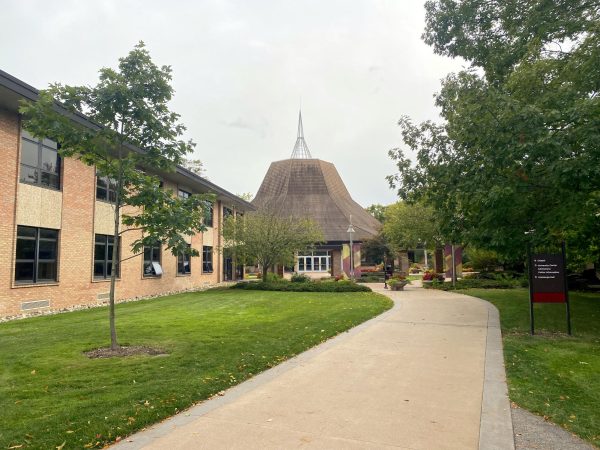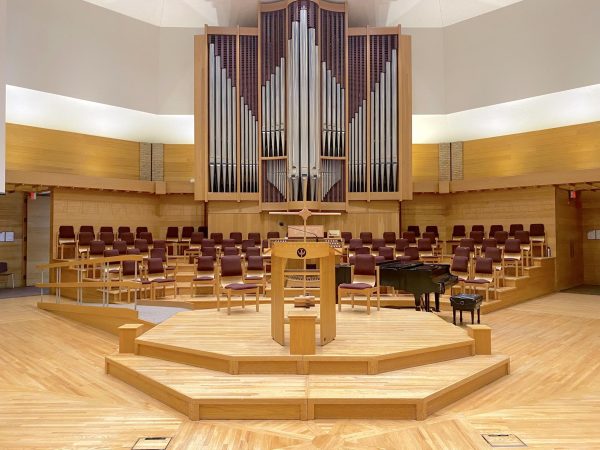Reformation art stirs the world
The Calvin College Art Gallery debuted an exhibit honoring the 500th anniversary of the Protestant Reformation of 1517 called “Stirring the World” on September 7. Introduced by curator and art history professor Henry Luttikhuizen, this exhibition contains German woodcuts, engravings and etchings dating from 1495-1550. Artists such as Albrecht Dürer, Lucas Cranach the Elder and Hans Baldung depict the agitation of the early sixteenth century.
In 1517, Martin Luther posted his 95 theses on the door of a German church, provoking Catholics and kickstarting Lutheranism. “Stirring the World” is an exhibition that shows the anxieties and agitation leading up to this event and its aftermath.
Luttikhuizen decided to display the exhibition from an angle of agitation because “being reformed means being an agitator. It means you’re looking for something new, that you’re dissatisfied.”
Luther was indeed dissatisfied with the Catholic church. He addressed the papal abuse of power with biting satire, using images of the pope accepting money from vendors placed next to images of Christ throwing vendors out of the temple.
Concern over a Muslim power rising in the East was combined with Anti-Catholic sentiment. This was displayed in an anonymous piece titled “Satire on the Papacy.” In this portrayal of the pope he has three heads and is paying off a Turk. According to Luther, the pope and the Turks were the “two great scourges” of the earth.
Along with papal misuse of authority and the Muslim concern, there was suspicion of witches and fear of an impending apocalypse during this time.
Under the stress of these issues, many became depressed. On display are depictions of mental illness and melancholia, which, according to Luttikhuizen, these fears contributed to.
The early 1500s were rife with doubt, which Luther responded to by emphasizing the importance of faith and courage. Dürer and Cranach reflected this with images of Hercules and St. Jerome, showing both physical and intellectual strengths in faith.
People also found solace in images of the Man of Sorrows: Jesus with a look of pain on his face, being alone and needing support from an angel to stand. Because people looked to Jesus to give them strength, artists depicted his human suffering to make him more relatable.The exhibition shows that Luther’s theology gave them comfort in God’s grace, courage to don the armor of faith and a more intimate relationship with Jesus. Although Luther may have been abrasive and fear of women, the Turks, the pope, and the apocalypse was prevalent, he drew people to the cross.
Luttikhuizen’s lecture ended on a hopeful note, reminding us that Martin Luther isn’t just important because he recently became the fastest-selling Playmobil figure of all time; he is important because he taught us to accept the grace of God, as shown in the exhibition.
“In Lutheranism, you look at art to reflect on things, then you look to God,” said senior Bekah Inman, an assistant at the gallery. “This is what the exhibition is all about.” Luther’s actions catalyzed controversy as well as comfort. Art such as this had that effect as well, playing an integral part in the creation of Lutheranism.
“I wanted people to think more self-consciously about the Reformation,” said Luttikhuizen. “I wanted them to think about the past, as well as the present. We’re more like these people than we think. Things were stirred up – you just hope that love floats to the top.”
This exhibition is in Calvin’s art gallery until October 14. The gallery will hold several talks and drawing workshops. Senior Ellianne Huizinga, a gallery assistant, drew a giant coloring page featuring apocalyptic monsters similar to the ones featured in the exhibit. It is located on the wall outside the gallery. She encouraged students to stop by and pick up a marker.
“With pieces donated from the Detroit Institute of Art, the Metropolitan Museum of Art and the St. Louis Art Museum, this is a real feat, especially for Calvin,” said Inman. “It’s unlike any other Reformation exhibit you’ll see.”










Paula Manni • Sep 15, 2017 at 10:33 am
Lovely feature! Thanks for highlighting the Center Art Gallery and the “Stirring the World” Exhibition.